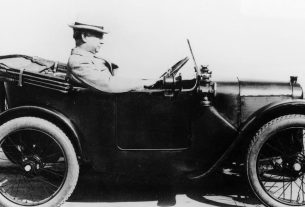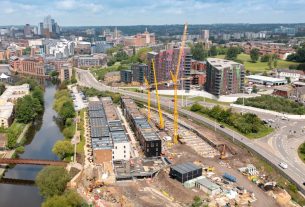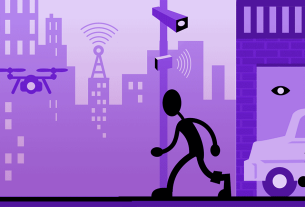|
Getting your Trinity Audio player ready...
|
Frank Beard is a longtime convenience retail enthusiast who currently works in marketing and customer experience at Standard AI. His column, The Road Ahead, examines innovation in the c-store industry.
If you’re a coffee nerd like me, then you’re probably familiar with the history of Starbucks.
For everyone else, allow me to bring you up to speed. In 1982, a guy named Howard Schultz took a marketing job at the Seattle coffee roaster. He soon fell in love with Italian espresso bars and their community vibe during a trip to Milan, tried to convince the company to sell beverages rather than beans, left to start his own chain in 1985, purchased his former employer in 1987 and has since grown Starbucks into a global phenomenon.
Central to Schultz’s mission was a belief that the intimacy of Italy’s espresso bars could be re-created in a way compatible with America’s lifestyle — and provide people with a third place outside of home and work.
Permission granted by Frank Beard
“In Italy, the coffee bar culture is in many ways an extension of people’s front porch,” said Schultz, in a 1996 article from the Los Angeles Times. “There’s such a strong sense of community in those coffee bars, in which neighbors and people come together every single day, and in many cases they don’t even know each other’s names. Coffee is the conduit to the social experience.”
Fast forward to the present day, and Starbucks has become an entirely different kind of business. In its latest quarterly earnings call, the company reported that 72% of sales were done through drive-thrus, delivery and mobile orders, with the latter surpassing 26% for the first time.
Far from their espresso bar heritage, cold drinks represented 76% of beverage sales and 60% of beverages were customized. The phrase “third place” was only mentioned once — preceded by the words “not just.” Some have even wondered if Starbucks is now an unregulated bank, claiming $181 million in revenue from unspent gift cards and loyalty accounts in fiscal year 2021.
Current and former employees have commented on this shift. As one Redditor put it: you “can’t create ‘customer experiences’ via a speaker box.” Another suggested that Starbucks is “not the third place anymore,” but rather the “McPlace.”
I’ve noticed these changes firsthand. While I’m not certain Starbucks was what sociologist Ray Oldenburg had in mind when he coined the phrase “third place,” there really was a kind of charm to their stores. But at some point it felt like Starbucks no longer optimized them for people who wanted to stay and linger. The booths disappeared — I was forced to squeeze into tiny two-tops at the intersection of two other people’s personal spaces — and those awful community tables showed up at some of the newer stores.
When I recently visited a few local stores in Des Moines, Iowa, where I live, I noted that they were busy, but nobody was there. The baristas were occupied with slinging sugary drinks through drive-thru windows and stacking mobile orders at the end of the counter. The two-tops were still too close and the overall space felt small and cramped — but I suppose that’s only an issue if anyone’s there.
I say all of this not to criticize Starbucks, but rather to point out that their abdication of the “third place” could be an opportunity for other businesses, including convenience stores.

A Smokey Row Coffee location is attached to a Hy-Vee Fast & Fresh store in Des Moines, Iowa.
Permission granted by Frank Beard
Home, work and the gas station
This may sound preposterous to some, but let’s not forget that convenience stores are — as I’ve previously written— aggressively investing in foodservice.
I don’t just mean better grab-and-go items, but rather the quality of food and beverages that you might expect from a cafe. Pair that with robust CPG offers and room in their footprints to get creative with indoor and outdoor seating, and one could argue that there’s an opportunity here.
Convenience retailers are under pressure to think outside the box. The fuel canopy’s relevance will decline over the next decade, and retailers are tasked with determining what will convince customers to drive to their stores or interact with them online. For many, the answer will come from kitchens, bean-to-cup coffee or even espresso equipment.
There’s signs of it already happening. Here in Des Moines, grocer Hy-Vee partnered with a local coffee roaster, Smokey Row, to build cafes inside some of its newest Fast & Fresh convenience stores. They’re spacious and comfortable in a way that encourages you to stay a while, and they’re aesthetically pleasing with see-through fireplaces, merchandise and even handpicked classic memorabilia.
Some of these stores are located on bike trails, including the latest design, which features an enormous outdoor seating area. This seems like a smart move since cycling is a big deal in Central Iowa. Not only does our state host the world’s oldest, largest and longest recreational cycling event, RAGBRAI, but Central Iowa is covered with hundreds of miles of paved trails. Many businesses are able to thrive from the traffic they siphon off them in the spring, summer, and fall.
Kum & Go has also done a fantastic job providing indoor and outdoor seating since debuting its “marketplace” concept in 2016. Paired with a new made-to-order food program, it’s positioned to attract folks looking for regularity rather than just indulgence. When the weather is nice, I enjoy walking to a store near my home and reading the news on my phone at the countertops by the massive windows. I also stop at another store on a favorite cycling route for breakfast bowls with spinach, roasted potatoes, eggs and other delicious ingredients.
Outside of my home market, Nashville’s Twice Daily and Vantage Fuels in Melbourne, Australia, are also showing signs of where coffee innovation might go in convenience retail. Twice Daily’s coffee concept, White Bison, feels like a true third-wave offer complete with single-origin pour overs while Vantage Fuels’ Bowser Bean concept is designed for the vibe consumers expect from Melbourne’s highly-competitive cafe scene.
But third places aren’t just about the offer. In a way, I think they need soul. They have to feel like they’re truly part of the community.
In other words: places like Sydney’s Jack & Co.
I recall a visit to one of Jack & Co’s convenience stores during a trip Down Under in 2019. The moment I walked through the door, I felt like I’d found someplace special. The store was covered with postcards customers purchased as part of a fundraiser for a local kid who was injured playing rugby — every one of them inscribed with a handwritten message. The owner, Wade Death, told me that he planned to box them up and send them to the family. In the end, they raised more than $41,000.

Permission granted by Frank Beard
I was also approached by a local who was delighted that someone from the U.S. was visiting her hangout. We even took a selfie for her community newsletter and Facebook group. A salesperson later came over to tell me how much he enjoyed the store and why the tiny, unassuming convenience retailer was his preferred place to get lunch and chat with business prospects.
I guess what I’m trying to say is this: Few retail channels have ever been as hyper local and interwoven with their communities as convenience retailers. As the business model transitions away from the needs of vehicles, it’s reasonable to expect that bold risk-takers will go after the gap left by Starbucks as it continues transitioning into a drive-thru and mobile order business — and abdicates its role as a provider of third places.
In a way, I think I welcome this.



